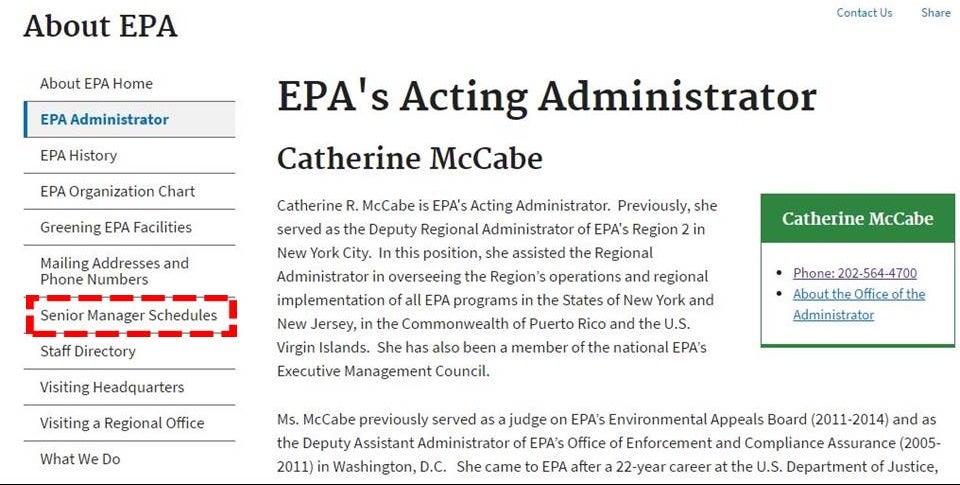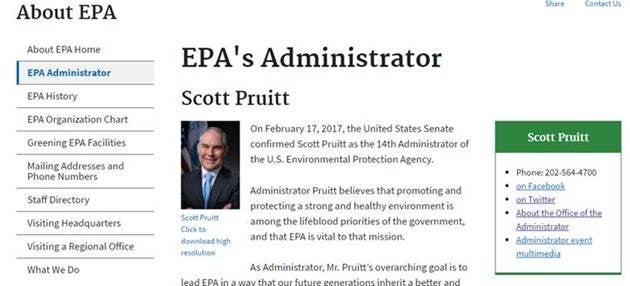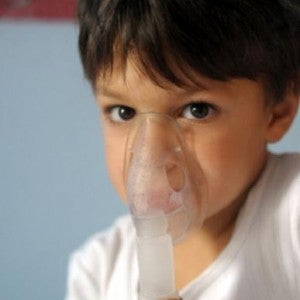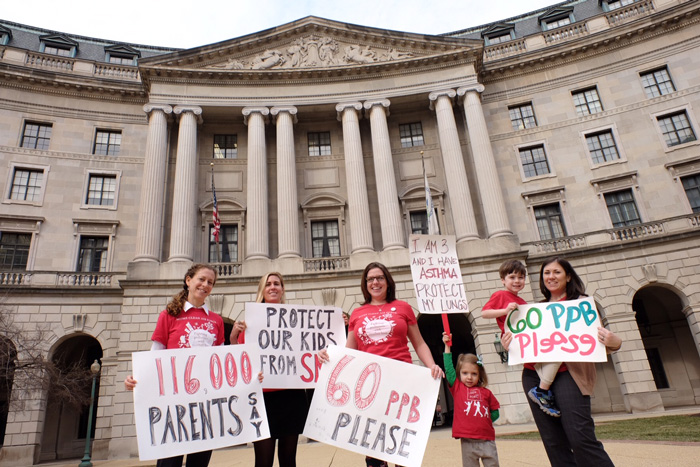 The Environmental Protection Agency (EPA) is refusing to move forward with the implementation of health-based standards that protect Americans from dangerous ground-level ozone pollution — more commonly known as smog.
The Environmental Protection Agency (EPA) is refusing to move forward with the implementation of health-based standards that protect Americans from dangerous ground-level ozone pollution — more commonly known as smog.
That’s why Environmental Defense Fund, along with a broad coalition of public health and environmental groups, sent a letter to EPA Administrator Scott Pruitt informing him that we will take legal action if he does not carry out his mandatory duty to begin implementing our nation’s 2015 health-based smog standard.
Smog is a caustic pollutant that irritates the lungs, exacerbates lung conditions like asthma, and is linked to a wide-array of serious heart and lung diseases.
It is particularly harmful for children, seniors, people with lung impairments like asthma, and anyone active outdoors.
Under the Clean Air Act, October 1, 2017 was the deadline for identifying the communities that meet our nation’s health-based smog standard, and for identifying those that are violating the standard. Administrator Pruitt missed this mandatory deadline to begin implementing the smog safeguards.
The Clean Air Act’s statutory deadlines are not merely suggestions – they are of critical importance to achieving better air quality. When EPA shirks mandatory deadlines, the Clean Air Act’s mechanisms to improve air quality fail to engage and American families suffer the harmful effects of breathing polluted air for longer.
Administrator Pruitt unlawfully attempted to extend this same deadline, by one year, earlier this summer. However, he was forced to withdraw this extension and reinstate the October 1, 2017 deadline in response to legal challenges filed by EDF and our public health partners, and by a coalition of 16 state Attorneys General.
Now Pruitt has failed to meet the deadline – adding to his concerning pattern of delay, and undermining these important public health safeguards.
Here’s more on the consequences of ignoring our national health-based smog standards:
By delaying implementation of the standards, EPA is allowing vulnerable communities to suffer the consequences of polluted air while Administrator Pruitt stalls.
For instance, delaying the standards will mean that residents of the Uintah Basin in Northeastern Utah will potentially be faced with more and longer exposure to pollution levels that at times can rival smoggy Los Angeles.
This is truly unacceptable when there are clear solutions for reducing smog and protecting public health, such as reducing the pollution emitted from the thousands of oil and gas wells that dot the basin – common sense solutions that would be helped along if the 2015 health-based smog standard was properly and timely implemented.
Administrator Pruitt’s failure to identify which communities have air quality that violates the health standard obscures Americans’ basic right to know whether the very air we breathe meets the level that EPA has determined to be healthy.
The health-based national air quality standard for deadly air pollutants like smog form the foundation of the Clean Air Act — a bedrock public health statute that has provided for extraordinary, bipartisan progress in protecting Americans’ health and the environment for more than 40 years.
These consensus-backed health standards save lives and protect American families. By EPA’s own estimate, compliance with the 2015 smog standard will save hundreds of lives, prevent 230,000 asthma attacks in children, and prevent 160,000 missed school days for children each year.
Failure to carry out his responsibilities under our nation’s clean air laws also demonstrates Administrator Pruitt’s disregard for the recommendations of EPA’s own public health experts and scientists.
The 2015 health-based standard for smog was developed through a rigorous and extensive rulemaking process over the course of several years, and the science on smog’s health impacts is well-established.
EPA finalized a revised, strengthened standard of 70 parts per billion after engaging in a transparent, public process and relying on well-established scientific information and the recommendations of an independent committee of scientific advisors.
Administrator Pruitt has a legal duty to carry out the health standard to ensure healthier, longer lives for millions of Americans afflicted by dangerous smog pollution. That’s why EDF joined so many others in telling him we’ll go to court if he doesn’t.
Those joining us on the notice of intent to sue are the American Lung Association, American Public Health Association, American Thoracic Society, Appalachian Mountain Club, Earthjustice, Environmental Law & Policy Center, National Parks Conservation Association, Natural Resources Defense Council, Sierra Club and West Harlem Environmental Action.
The Attorneys General of New York, California, Connecticut, Delaware, Illinois, Iowa, Maine, Massachusetts, Minnesota, New Mexico, Oregon, Pennsylvania, Rhode Island, Vermont, Washington, and Washington D.C. sent a similar letter.
We urges Administrator Pruitt to “expeditiously” carry out his responsibility under our nation’s clean air law to protect the health of our families and communities. There is no time to waste.

















